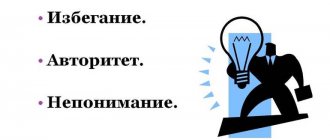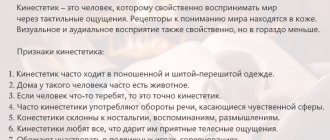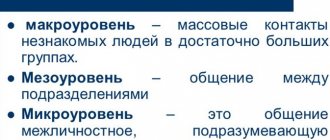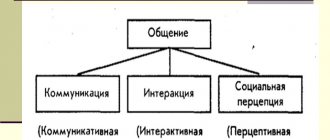personal development negotiations
16.11.2021
Author: Academy-of-capital.ru
Add a comment
Rating:
| (Votes: 1, Rating: 5) |
From this material you will learn:
- Difference between verbal and nonverbal communication
- Conscious and unconscious nonverbal communication
- The Importance of Conscious Nonverbal Communication
- 5 Functions of Nonverbal Communication
- Main types of nonverbal communication
- Features of interpretation of non-verbal signals
- Tips for developing nonverbal communication skills
There are various types of nonverbal communication: from certain gestures to touch, from a person’s gaze to his spatial position or even just appearance. And each of these signals carries certain information; it is only important to interpret it correctly.
But this does not always work out. While some gestures are quite unambiguous, others may not be entirely clear to a participant in a dialogue who does not understand body language very well. But in the case when a person is well versed in the topic, many interlocutors are like an open book to him. And this state of affairs greatly facilitates communication.
Means of nonverbal communication
The main means of such communication is the body, which is capable of transmitting information through facial expressions, gestures, pantomime, changing position in space and the mise-en-scène of communication.
Due to the diversity and richness of facial capabilities, our body is capable of transmitting a huge number of images, becoming a powerful tool for conveying the necessary information to people around us.
It’s very easy to check this: just try to watch a movie in a foreign language that you don’t speak, and you will be surprised to note that you understand, if not the very essence of the characters’ conversations, then the message, the emotions that they put into the conversation, and even main idea and plot.
This is due to the fact that, in conditions of semantic deficit arising from ignorance of the language, we subconsciously monitor facial expressions, micro-gestures more closely than usual, and read the plot and emotional components from the movements and tone of voice of the characters.
Forms of verbal communication and barriers are not his way
When communicating verbally, we can use different forms and styles in order to convey certain information in a specific context and color. This can be clearly seen in the styles that are used in literature:
- Journalistic - the main goal of such a speech is to convey to people the idea, the essence of what happened.
- Scientific – distinguished by logic and clear statements using terminology and complex concepts.
- Official business is the dry language of laws, where everything is precise and without any epithets.
- Artistic - here it is possible to combine any words and word forms, jargons and dialect (dialectisms), speech is filled with unimaginable images and colors.
- Conversational - characterizes both individual dialogues in works and our communication with you when we meet an acquaintance.
Speech interaction can be divided according to the number of people who take part in it:
- Monologue (one person): speaking - at meetings in front of someone or reciting a poem in front of the class;
- report - important information, usually supported by numbers;
- report - similar to a report, but provides more extensive information and description;
- lecture – presentation of useful information to the audience.
Dialogue (two or more people):
- ordinary conversation - exchange of greetings and thoughts;
- discussion – discussion of a topic where the interlocutors represent different points of view;
- dispute – here, too, there are two positions between which the resulting conflict needs to be resolved;
- a debate is a discussion within the framework of science;
- interview - a conversation during which the employer thinks about whether to hire a person.
Despite the fact that we communicate in the same language, various barriers to verbal communication may arise:
For example, phonetic. The interlocutor may have a speech impediment, unpleasant diction, choose an unusual intonation, sprinkle words with parasites, etc... Semantic interference grows between people from different countries, with different mentalities, or even when raising children in different families. A logical barrier is if the interlocutors have different types of thinking, levels of development and intelligence. A stylistic barrier is that the interlocutor incorrectly builds a chain of verbal communication to convey information
First we need to attract attention to what we want to say, to interest. Then lay out the basic information; answer questions that your opponent may have
After this, give him time to think about it so that he can draw conclusions or make a decision.
Language
Saying that we speak one language, for example, Russian, we little think about the fact that we actually know two languages: not only language as a means of verbal communication, but also body language - a universal complex of postures and movements with the help of which Representatives of different nationalities, cultures and races can communicate.
Unlike dictionary language, to master which you need to study the alphabet, phonetics, grammar and other components, sign language is unique: using obvious mental images and concepts, we can establish communication with both Amazonian Indians and Eskimos.
Of course, this communication will be simple, at the level of basic concepts, but without the use of means of non-verbal communication, through the use of words alone, we will not achieve anything at all - our language will be incomprehensible to our interlocutors, while pointing a finger at a subject of interest is universal and will help establish initial contact .
Visual contact gaze
Eye contact is an undeniably important communication process. As you already know, a person receives about 80% of impressions from all senses through vision. With the help of the eyes, we can convey a wide variety of expressions; thanks to them, we can control the course of the conversation and provide feedback on human behavior. The gaze helps in the exchange of remarks, since most statements without the participation of the eyes would be meaningless.
Remember how urgently interlocutors on the Internet need a variety of emoticons, which are a replacement for such means of non-verbal communication as the exchange of glances and facial expressions. After all, without seeing each other, it is much more difficult to convey the feelings experienced. Developers of instant messaging programs, improving their software characteristics, are trying to include and expand the function of eye expression, general facial expressions and various hand gestures. And, as practice shows, the demand for such programs like ICQ is very high. People crave meaningful communication on the Internet. And the emergence of the video calling function in cell phones and the installation of video equipment on the computer, which allows you to communicate interactively, contemplating each other, is precisely the answer to the need for live communication at a remote distance.
The gaze also takes part in the expression of intimacy and frankness. With it, you can set the degree of proximity to a person.
In communication, the gaze, as a rule, carries out an information search, for example, the listener looks at the speaker, and if he pauses, silently awaits continuation without breaking eye contact; gives a signal about a free communication channel, for example, the speaker indicates with an eye sign that the conversation is over; helps establish and maintain social relationships when we seek a person's gaze to engage in conversation.
In psychology, there are several types of looks, each of which carries very significant information about a person’s thoughts: 1. Business look - when we look at the forehead and eyes of the interlocutor. We often behave this way when meeting unfamiliar people, managers and bosses. 2. Social gaze – when we direct our eyes to the area of a person’s face in the area of the mouth, nose and eyes. It is typical in situations of casual communication with friends and acquaintances. 3. Intimate gaze - passes through the line of the interlocutor’s eyes and drops to a level below the chin, neck and other parts of the body. There may be dilation of the pupils, as an anticipation of pleasure.
We have already mentioned the fact that it is more difficult for men to deceive their wives and girlfriends, since women can expose a lie much faster by reading their eyes. How do they do this? First of all, by characteristic changes in the eyes due to contraction of the eye muscles. When trying to deceive, it is difficult for a person to withstand the gaze; he blinks and looks away. These signs may also be present with sadness, shame, and disgust. If he experiences suffering, tears flow from his eyes, but they also appear with laughter and joy. In any case, to correctly interpret nonverbal gestures, we take into account the surrounding environment and the context of circumstances. One thing is definitely certain: the dilation or constriction of the pupils, which occurs as a response to excitement, occurs involuntarily, without taking into account consciousness, and the autonomic nervous system is involved in this. If the direction of gaze can still be controlled somehow, then changing the pupils is beyond our control. When we talk about a person: “he has expressive eyes”, “she has an evil look”, “she cast the evil eye on me”, we mean precisely the information obtained through non-verbal communication when observing a person’s pupils. Children abandoned by their parents have a dry, distant look, filled with the pain of loneliness, which gives them an adult expression. On the contrary, loved and caressed babies look at the world completely differently.
The length of the gaze may indicate the degree of interest. A close, persistent person will tell you about his intention to extract some information from you or force you to obey. For couples in love, such a look serves as a signal to begin active courtship. If you look closely at a sleeping person, he may subconsciously experience anxiety and even wake up. It is interesting that in the animal world, a gaze serves as a signal for an impending attack, so it is not surprising when, sensing a similar signal from an unfamiliar person, you experience anxiety and a desire to hide. With peripheral (lateral) vision, we are able to see objects and the situation around us and analyze the degree of danger. Serial killers and maniacs have a very different view from the view of an ordinary person. All previous behavior of a person up to a given point in time, the situations that he solves and the methods he uses to eliminate problems - everything leaves an imprint on the expression of his eyes. A tired mother after a sleepless night with a baby, a pensioner living on crumbs, a student who did not receive the scholarship he was counting on - everyone has a peculiar expression in their eyes. If, for example, you are in close relationships with such people, you will definitely understand the reason for this look.
Nonverbal signals as the only means of communication
The importance of non-verbal communication cannot be overestimated - it remains the only means of exchanging information in cases where:
- people do not know each other's language even at a basic level;
- people do not have the physical ability to make sounds.
If in the first case it is subsequently possible to establish a higher level of communication through the gradual study of each other’s languages, then in the second, various types of non-verbal communication come to the fore and become the only possible means of contact.
For people with speech disabilities and hearing loss, sign language is the only language they can use, and their fingers become their vocal cords and their gestures become their words.
In situations where people who are physically capable of producing sounds find themselves in an environment that does not allow them to pronounce these sounds, it is the tools of nonverbal communication that come to the fore. These signals are used in scuba diving (dive signals), in noisy rooms (rolling shops, engine rooms), while hunting, and when participating in hostilities (ambushes).
The history of the emergence of nonverbal means of communication
Nonverbal behavior as a set of gestural and figurative expressions through the body arose at the dawn of humanity, when language as a means of communication had not yet been invented, and communication between individual representatives of the tribe was carried out precisely through nonverbal behavior.
It was possible to convey information through primitive gestures, and non-verbal means of communication coped with the task that ancient people needed to solve perfectly. They pointed to prey and fellow tribesmen with their hands, depicted simple phenomena - rain, thunderstorms, mimicked anger, threatened, grinning and baring their teeth.
An excellent example of primitive nonverbal behavior is the communication of dogs. Dogs almost never bark when meeting - they communicate by changing their gait, posture, level of tail movement, grinning or lowering their ears, and the information they receive is enough for them to correctly assess the situation and the status of their interlocutor.
Conscious and unconscious use of body signals
Nonverbal means of communication can be divided into two types based on the consciousness of use:
- nonverbal communication that we use consciously is those facial and gestural means that we use deliberately, that is, the tools we use to clearly convey specific information to the addressee;
- involuntary nonverbal behavior is those postures, gestures and changes in body position, as well as microgestures that we use unconsciously, uncontrollably. A specialist who knows how to read the signs of involuntary nonverbal behavior can tell more than the words we say.
Consciously used such means of communication provide a large layer of gestural, plastic and facial capabilities. Actors most clearly demonstrate this type of non-verbal communication tools: when playing a role, they use gestures and facial expressions to bring the image to perfection and give credibility to the game. The tools of good actors are very rich; they are able to remember and apply hundreds of different small poses, glances, turns of the head, which add variability to the words they use for the role.
Microexpressions and involuntary nonverbal cues
Involuntary nonverbal behavior is those contractions of the muscles of the body and face that a person is unable to control.
Consciously telling a lie, trying to hide feelings, a person is nevertheless unable to control the so-called micro-expressions flashing on the face. These are tools of non-verbal behavior that help a specialist psychologist or simply a very observant interlocutor to recognize deception, an attempt to hide information or emotions, since it is impossible to consciously keep muscles from contracting such muscles.
Representatives of certain professions, for which the ability to recognize deception is very important, are taught this ability, or they look for people who are initially predisposed to reading microexpressions. Thus, the ability to detect a lie is extremely important for customs officials, security services, and investigators.
To correctly recognize facial microexpressions, it is important to remember that facial expressions do not express the subject’s thoughts, but feelings, and if disgust flashes on the face for a moment, this does not mean that it is caused by the subject of the conversation - perhaps the person simply has an unpleasant association.
Consciously reading nonverbal cues
Like the use of nonverbal behavior, the ability to correctly read and recognize nonverbal signals given by an interlocutor can be conscious and unconscious.
Conscious reading of nonverbal behavior allows us, by observing the interlocutor, to understand by his facial expression, posture, gait, and even the turn of his shoulders, what feelings he is experiencing and what shade his speech has.
For example, the phrase: “I hate you!” written on paper cannot be read unambiguously without a description of the facial expressions of the speaker. In life, the nonverbal behavior of the speaker will say a lot about the subtext:
- if it is pronounced expressively, with frowning eyebrows, pursed lips and lowered corners, with tense fists, the interlocutor will understand the message - he is really hated, since the whole posture and face of the speaker expresses anger;
- pronounced in a cheerful tone, supported by a smile and a casual wave of the hand with a relaxed body, the same phrase becomes a playful, friendly joke.
It is at such moments that non-verbal means of communication are indispensable; it is not for nothing that authors of fiction often use the epithets “muttered”, “shouted out”, “hissed” instead of the dry “said”, giving faceless words an obvious emotional connotation.
Kinesics
Kinesics is a branch of psychology that studies human emotional reactions from the point of view of his expressive movements (body movements). In this aspect, the following are considered as the main non-verbal means of communication: posture, expressiveness of gestures, facial expressions, gait features, gaze. It is believed that the information that the interlocutor wants to convey through speech may differ significantly from the feelings he actually experiences.
Pose
The postures a person takes during a conversation indicate his true intentions, more eloquently than gestures and facial expressions. Coping with your emotions is easy, but controlling postures when communicating is more difficult.
Modern psychologists divide postures into three types:
- Dominance - a person hangs over, tries to look down from above, sits leaning back, crossing his legs. Dependency – the individual lowers his head, sits with his knees tightly clenched, fiddling with his fingers.
- Closedness - the opponent clasps his fingers, closes himself by crossing his arms and legs, moves away from the interlocutor, and looks away. Openness - an individual who is inclined to communicate is distinguished by a relaxed posture, a wide smile, open palms, outstretched legs, and the torso turned towards the interlocutor.
- Confrontation is expressed by a raised chin, clenched fists, arms outstretched or placed on the hips, sides. Harmony is manifested in the speaker’s peaceful posture and good-natured gaze.
Gestures
With the help of these non-verbal elements of communicative communication, our ancestors have been trying to achieve mutual understanding since ancient times. Head movements and hand gestures can convey the emotional state of the interlocutor - his overexcitation, sadness, joy, anger, etc.
In the non-verbal sense, sign language is classified into the following types:
- modal – conveying the attitude of the conversation participants (trust/distrust, approval/disagreement, satisfaction/dissatisfaction);
- communicative - used for prohibitions, approval, farewell, greeting, attracting attention, etc.
- descriptive - express emotional coloring in the context of certain statements.
Facial expressions
Facial reactions are considered one of the main indicators of the true feelings of the interlocutor. According to research, if an individual maintains a still face, then information about his personal characteristics is lost by 15%. Psychologists have noted more than 20,000 different nonverbal interpretations of facial expressions. The main emotional states are:
- anger;
- fear;
- irritation;
- sadness;
- astonishment;
- joy;
- disgust.
When a person’s emotional state changes, the configuration of the entire face begins to dynamically change, mainly the lips, eyebrows and forehead.
Gait
The gait personifies the individual's position in life. By analyzing a person’s style of movement, one can judge the characteristics of his character, age, well-being and even profession. By the dynamics, rhythm and amplitude of the step, psychologists learn about such states as pride, suffering, illness, anger, determination, happiness, etc. A “light” gait indicates high spirits, joy, and self-confidence. “Heavy” – typical for gloomy people who are despondent or in a state of anger. “Sluggish”, “sluggish” - happens in suffering, insecure people.
Sight
Eye contact is a non-verbal signal that is the most important element in the art of communication. A direct, interested look endears the interlocutor and arouses sympathy. Looking too long is perceived as a challenge, excessive interest of the interlocutor. A short one, on the contrary, gives reason to believe that the opponent is insincere and is hiding information. It is considered optimal to exchange glances for 10 seconds.
It is also worth taking into account the national factor, for example, Asians (Japanese, Koreans) do not often look at faces, Europeans are distinguished by their direct gaze. Depending on the specifics, psychologists distinguish the following types of views:
- social – typical for secular, relaxed communication;
- business – used in a working atmosphere (when concluding business contracts, interviews, etc.);
- intimate – personifies interest, love, etc.;
- a sideways glance may indicate hostility, envy, criticism, or suspicion.
The eyes are capable of transmitting the most subtle signals of an individual's emotional state. Constriction/dilation of the pupils occurs in a person at an unconscious level, depending on his mood and state of the body. An excited person interested in something will have pupils dilated 4 times. A gloomy, depressive state leads to constriction of the pupils.
Unconscious reading of nonverbal cues
Just as the body gives away our lies by broadcasting involuntary nonverbal signals in the form of momentary microexpressions and gestures, our subconscious mind is able to read these types of nonverbal communication.
For example, you are communicating with an interlocutor who seems to be saying something pleasant, positive, making promises and convincing of his loyalty, but something inside you is itching: “He is lying, fawning, trying to hide information, he cannot be trusted!” . Some call it intuition, others call it a premonition, but from the point of view of the science of nonverbal communication, this is nothing more than the unconscious reading of the microexpressions of the interlocutor, comparing them with words and subconsciously assessing the correspondence. When a discrepancy is found between verbal and nonverbal signals, the brain tries to tell you in every available way: the person is hiding something, the gestures do not correspond to the words, you need to be on your guard!
Unconscious nonverbal behavior cannot be controlled, and specialists who can read such microexpressions learn to turn unconscious recognition of nonverbal communication gestures into conscious awareness through extensive training.
Basic characteristics of nonverbal signals
Various parts of the body are used as tools to use and read such signals, but posture, gait, and plasticity are also important.
The nonverbal behavior of an open, self-confident subject is characterized by the following features:
- straight back, shoulders turned, good posture, free gait;
- raised head, confident look directly at the interlocutor;
- “open” gestures - relaxed arms, not closed on the chest or in a “lock”, legs not crossed;
- absence of fussy small gestures, attempts to cover your mouth or nose with your palm.
Nonverbal means of communication that demonstrate that a person is trying to hide something:
- drooping chin, tense shoulders, slight hunching;
- a gaze constantly moving from the interlocutor’s face to the floor or running over objects behind his back;
- “closed” gestures - arms crossed on the chest, a “leg to leg” pose, involuntary touching of the nose and lips with fingers, hands “housed” at chin level.
Such signs of nonverbal communication allow you to assess the degree of frankness of the interlocutor, help you take a sober approach to what he says, and decide whether to trust the person.
Expressive movements
Open gestures and body postures
Openness
The interlocutor's hands are turned palms up and spread wide to the sides. The head is straight, the shoulders are straightened. The look is direct. Facial expressions are natural, without tension or stiffness. This pose of friendliness, as a means of non-verbal communication, speaks of openness and sincerity. It is also indicated by shaking hands and clasping them with both hands. Men may unbutton their shirt or jacket while talking. When communicating with such a person, you involuntarily relax and feel trust in him.
This technique is recommended to be used when communicating with people who are significant to you. Combined with a sincere tone, you will quickly win your favor.
Sympathy
In nonverbal communication, there is the concept of mental contact, which is expressed in the involuntary copying of each other’s gestures or entire behavior. A signal is sent to each other: “I understand you perfectly.” And indeed, if you take a look at a couple peacefully talking at a table, you will see similar poses, the same placement of hands, even mirroring. If you want to convince another person to unconditionally share his opinion, simply copy his body position.
If you observe the gait of a happy man in love, we will notice a flying gait, which is very noticeable. It is also typical for self-confident, energetic people. It seems that they don’t care about all the problems.
Closed gestures and postures (defense, suspicion, secrecy)
Deception
Have you probably seen someone hiding their hands during a conversation? It is likely that he is telling a lie, since the person’s brain subconsciously sends signals to the body and when a lie is told, a strong desire arises to put his hands in his pocket, scratch his nose, and rub his eyes. All these are typical signs, however, as MirSovetov has already said, the meaning of non-verbal gestures must be explained together. A person suffering from a runny nose can scratch their nose, a child who has just woken up can rub their eyes, etc.
Defense
Arms crossed on the chest, legs crossed in standing and sitting positions - a classic gesture of closedness and inaccessibility. Frequent blinking is a sign of protection and confusion. A person’s emotional status does not allow him to feel free and at ease. If you try to negotiate something with such an interlocutor, it is likely that you will receive a refusal. To “melt the ice,” MirSovetov advises using the means of nonverbal communication already described above, try to take an open pose with your palms up.
Gestures of reflection and evaluation
Concentration
Expressed in pinching the bridge of the nose with closed eyes. When the person you are communicating with is deciding what to do or what to do, or generally thinking about solving a certain issue, he may be rubbing his chin at this time.
Criticality
If a person holds his hand to his chin, with his index finger stretched along his cheek, and with the other hand supports his elbow, his left eyebrow is lowered - you will understand that he has a negative assessment of what is happening.
Positivity
Interpreted as a slight tilt of the head forward and a light touch of the hand to the cheek. The body is tilted forward. Here is a person who is interested in what is happening and has a positive attitude towards information.
Gestures of doubt and uncertainty
Mistrust
Have you probably noticed how some students cover their mouths with their palms while listening to a speaker? This gesture indicates disagreement with the lecturer's opinion. They seem to hold back their statements, suppress true feelings and experiences. If during a conversation your friend unexpectedly made a gesture of distrust, stop and think about what words caused such a reaction? By observing the behavior of the boss, the subordinate will understand what needs to be said and what it is better to remain silent about. Distrust quickly turns into rejection and then into refusal.
Uncertainty
A nonverbal gesture such as scratching or rubbing the back of the ear or neck may indicate that the person does not fully understand what you want from him or what you mean in the conversation. How to interpret such a gesture if you were told of complete understanding? Here preference should be given to the non-verbal body signal. In this case, the person did not understand anything. A hand clasping another’s elbow from behind also speaks of uncertainty; its owner is probably in unfamiliar company.
Gestures and postures indicating reluctance to listen
Boredom
The interlocutor props his head with his hand. It is clear that he is indifferent to what is happening. If he is sitting in the audience, we can say with confidence: the material presented by the lecturer is completely uninteresting. In such cases, MirSovetov recommends changing the topic of conversation to something that worries him or “shake him up” with an unexpected question. Be sure that he will wake up, and this is exactly what you need.
Disapproval
Shaking off non-existent lint, straightening the folds of clothing, tugging at your skirt in non-verbal communication is a sign of your opponent’s disagreement with the point of view being expressed. You will quickly realize the need to switch to neutral topics. However, if a thread actually sticks to the sleeve of a jacket, or the clothing is wrinkled, this should not be regarded as a gesture of disapproval.
Willingness to leave
It can be identified by such signs as drooping of the eyelids (loss of interest), scratching the ear (blocking out the flow of speech), pulling on the earlobe (does not want to speak), turning the whole body towards the door or pointing the leg in this direction. The gesture of removing glasses also gives a signal to end the conversation.
Irritation
When a person tells an obvious lie and realizes that you have seen through him, he will experience irritation from your rightness, which may manifest itself in an involuntary loosening of his tie or collar. In non-verbal communication, this can also manifest itself in rubbing the neck, unnecessary movements of the hands, pinching a lady’s purse, or mechanically drawing on paper.
Gestures of dominance
Superiority
The so-called “director pose” or “boss pose” in a sitting position. Hands lie behind the head, one leg on the other. If the eyelids are barely closed or the corners of the eyes are slightly squinted, the gaze is directed downward - you see arrogance, disdain. This body position is often adopted by bosses and people in leadership positions as a means of nonverbal communication. They are confident in themselves and demonstratively express their importance to others. An attempt to copy this gesture threatens immediate dismissal from work.
Equality
Almost all men use this gesture, much less women. The nature of the handshake can say a lot, first of all it will reveal the intentions of the other person. If, at the moment of joining two hands, one is higher with the back side, its owner demonstrates his leading position. You can check how firmly he defends his status as a leader in a simple way: turn your hand up. If you feel resistance, it means that you will not be able to convince him to take equality between you.
Sexual gestures
When a man likes a woman, he shows his thumbs tucked into his belt, places his hands on his hips, or spreads his legs wide apart. The look at a woman is usually intimate, and can linger for a long time on selected parts of the body. A man may involuntarily straighten his tie or collar with his hand. If a woman tries to interest you, she unconsciously raises her head, straightens her hair, straightens her blouse. The more subtle art of seduction through non-verbal communication involves exposing your wrists and spreading your legs while sitting or standing. If a woman shows an intimate look in combination with an accidentally slipped strap on her shoulder, a half-dressed shoe on a crossed leg, be sure of her desire to start flirting. An open mouth and wet lips are typical sexual calls.
Tactile movements
These include hugs, handshakes, pats on the shoulder or back, touching, and kissing.
Embrace
The nature of the hug, its strength, and duration determine the meaning of the feelings expressed by a person. Bosom friends who have been separated for a long time almost strangle each other in a tight embrace when they meet. The lovers linger in a tender embrace for a long time. Hugs between distant relatives, depending on previously maintained contacts, can be either restrained, cold, or passionate. Between close people they have a soft, heartfelt meaning. At wrestling competitions, for example, the participants briefly hug and disperse.
Such a means of non-verbal communication as hugs is more common among representatives of the stronger half of humanity; among women they are slightly less common. Nowadays you can see two teenage girls on the streets running towards each other with open arms. At this age, the frequency of such contacts, both between boys and girls, is expressive in nature, when you want to throw out an excess of joy, delight and admiration for the meeting. If you see same-sex couples slowly strolling along the sidewalk in entwined arms, this may involuntarily suggest a gay person.
Handshakes
Handshakes, as one of the means of non-verbal communication, also differ in the way they are performed, strength and duration. A strong, energetic shaking of the interlocutor’s hand, coupled with a joyful exclamation, speaks of the partner’s sincerity and his desire to continue the conversation. Wrapping your hands in the form of a “glove” also speaks of friendliness. But if they hold out a lifeless hand to you, like a dead fish, they don’t want to contact you.
A cold hand in a handshake can signal that its owner is either cold or very worried. Steamy palms indicate a nervous experience. A hand that is palm down in a handshake indicates a desire to dominate the other person. If, on the contrary, it is turned palm up, its owner unconsciously recognizes himself as subordinate to the interlocutor.
Patting on the back or shoulder
Patting on the back or shoulder is mainly characteristic of men. These nonverbal gestures are often interpreted as signs of friendship, concern, or encouragement. They can be seen in almost all age categories. Patting, as it were, demonstrates masculine strength and the willingness of its owner to come to the rescue.
By the way, this gesture should not be confused with that used in medical practice. They slap a newborn child on the back to make him scream and expand his lungs; they slap a choking person from behind. Patting is a type of technique in massage practice. That is, the specific meaning of this gesture depends on the current situation.
Touch
Touch is common in the world of nonverbal communication. In educational activities, it helps to stop a mischievous person, in the case of a deaf person, to attract his attention; in medical practice, this gesture is used to diagnose a health condition; the massage technique is based on a combination of ways of touching the body; in the intimate sphere between spouses, they serve as foreplay to the connection. Different types of touch are an indicator of the partner’s unexpressed feelings. They can be gentle, affectionate, light, strong, rough, wounding, etc.
Kisses
Kissing, as a type of tactile gesture, is widely used in all aspects of human life. In relation to a specific object, the nature of kissing changes. The mother kisses the child tenderly and lovingly, between loving people they can vary from a light touch of lips to a passionate kiss. MirSovetov, in a separate article, reveals the whole gamut of this type of gesture in courting the opposite sex. Here we note that kisses can be both sincere manifestations of feelings and formal, cold, traditional. They kiss when meeting and goodbye, kiss at birth.
Business conversation
Nonverbal means of communication in negotiations and at work are of great importance: despite the formal unspoken ban on an overly expressed emotional component in business communication, a successful salesperson is able to either fail a product presentation or save it with the help of properly constructed nonverbal communication with listeners.
If a specialist presenting a product or technology presents it, monotonously reciting the text, without using a change in intonation, without supplementing the words with gestures, facial expressions, if he slouches and nervously rubs his hands, the listeners unconsciously read all these signs of uncertainty and are imbued with distrust of the product through distrust of the person presenting it to a person.
If the presentation is accompanied by competently delivered speech, rich in intonation, supported by open gestures, a smile, good posture and an open look, unconscious non-verbal communication signals: your interlocutor is worthy of trust, which means the product is too.
Psychology of human behavior: manifestation of sympathy
Nonverbal contact between people is established with the help of images, facial expressions, and intonations. Body language is a great way to express feelings without words. Techniques, poses and gestures of falling in love have long been known. It is used by young and not very in love people to quickly achieve their goals.
Body language is of great importance when choosing a person to live with. Nonverbal signs of special enthusiasm are a sparkle in the eyes, dilated pupils and characteristic body movements. Behavior can help you understand a person's interest in romantic and intimate relationships.
Women bite their lips, shake their hair, twirl strands of hair around their fingers, touch their thighs and show off their wrists. As for the stronger sex, men subconsciously demonstrate their best qualities: they pull themselves up, trying to look taller, straighten their shoulders, straighten their shirt collar and tie.
Interest in romantic and intimate relationships is revealed by a sliding, examining gaze over the figure, lingering on open areas of the body. The poses of lovers and expressions of sympathy reveal their most intimate things, allowing them to trust each other limitlessly.
There is the easiest and fastest way to find a man using dating sites. I present to you the “Men Generator” course - the fastest dating, which has helped many find happiness in love.
Psychology: male body language and gestures
Man's body language and gestures
A man can make a strong impression on a woman if he knows how to play with body language and demonstrate natural strength. Well-known seducers thus achieve the affection of the female sex in a matter of minutes.
Don Juans are successful, using excellent tricks that can be compared to the mating games of birds and animals. When a man meets a beautiful woman, the pupils of his eyes dilate, his body turns and leans towards the “prey”, while the man scratches his chin, strokes his hair and thighs.
Slightly flared nostrils will tell you about your love intentions. Next to a woman, the seducer seems to lack air from an overabundance of feelings. Such gestures show true desires and intentions.
Nonverbal communication between a man and a woman
Body language and gestures of women
Reading women's body language is not difficult. They, unlike men, like to gesture more with their hands and use relaxed movements to make a lasting impression on a man. Men perceive this behavior in a way that suits them, drawing appropriate conclusions about women's signals.
Feminine tricks used to seduce men are supported by sexual poses: swaying hips, playing with curls of hair, deep voice, stroking legs and thighs.
When talking with a man, the lady tries to sit closer to him and leans forward. She looks straight into the eyes, crosses her legs and paints her lips in the presence of a man. Manifestations of sympathy are also noticeable when walking - the woman sways her hips, sticks her chest forward, and makes sharp movements with her head as she walks to push her hair out of her face.
What do hand gestures mean?
Sexual gestures of men
Men are characterized by erotic gestures:
- an intimate gaze slides over a woman’s body, as if undressing her;
- legs spread wide. Here the man is unconsciously displaying his genital area, an instinct in many primates;
- palms lie on hips;
- touches his neck with his hand, straightens his tie and shirt collar;
- when a woman appears, he straightens his shoulders, plays with his muscles, attracting the opposite sex;
- When sitting, he stretches his legs.
Healthy sex is a magical cure for all diseases! Take the “Healthy Sex” training kits by A. Mamatov, which include two valuable courses “Full Immersion” and “Foreplay”.
Sexual gestures of women
Women are characterized by erotic gestures:
- straightens her hair by touching her hair;
- tilts his head to the side;
- sways his hips while walking;
- crosses legs in a sitting position;
- strokes his thighs with his hand;
- shows wrists;
- leans confidently towards the man.
- flirtatious look, with a mysterious smile;
- slightly open mouth with wet lips;
- a quiet voice attracts sexual partners.
Women want to be forever young, beautiful and sexy! To avoid premature wear and tear of the body, in order to look older in photos of past years than in the reflection, take a “Leap into Youth.” Take advantage of Alexey Mamatov’s invaluable video course and look several years younger!
Common gestures of women in love
Nonverbal cues in face-to-face communication
Nonverbal communication in personal relationships is the basis of communication. Words alone, without emotional reinforcement, without touches and small, but unconsciously read signals, will not get you far in family life.
Spouses may communicate little, exhausted by everyday life, children and work, but if in a dream they move closer to each other, if in rare hours of being together in the house, even when each is busy with his own business, they find a second to touch each other, smile - such the family is strong.
On the contrary, couples who publicly hug, kiss and otherwise express positive emotions at the level of conscious non-verbal signals, but do not experience warm feelings for each other, betray themselves by the absence of small gestures - momentary touches, glances, light smiles, and others often unconsciously read this information and before the spouses themselves begin to guess that something is wrong in the family.
To maintain relationships, it is very important to remember about non-verbal means of communication, not to underestimate the importance of touch and expressing emotions not only through words.
Proxemics
Proxemics is based on the construction of interpersonal relationships between individuals using spatial constraints. From the point of view of proxemics, nonverbal means of communicative communication include:
- Distance
- Orientations
- Distance
Psychologists have established several norms of “proximity” (spatial distances):
- Intimate – intended for the closest people (0-45 cm)
- Personal – allowing you to communicate with mutual friends (45-120 cm).
- Social – recommended for formal communication with unfamiliar people.
- Public – allows you to refrain from communication or speak in front of an audience.
An interlocutor who adheres to the above norms not only makes a favorable impression, but also feels more confident and comfortable.
These means of communication may vary depending on the nationality, social status and country of residence of the individual. Gender, age and personal characteristics of a person also matter.
Orientation
Such a proxemic component as orientation conveys various shades of a person’s emotional state, in terms of the angle of communication and the direction of the partner. Turning the toe and body can signal a person's attitude towards the opponent. A negotiator who decides to end the discussion involuntarily turns his body towards the exit. In business communication, seats at the negotiating table also matter:
- on the contrary, it characterizes a competitive-defensive position in which participants rigidly defend their point of view;
- on the one hand, it is the most convenient option for jointly discussing problems and developing a common solution;
- corner location - allows for a friendly and relaxed conversation;
- diagonally - the position indicates a lack of interest and reluctance of the participant in the conversation to interact.
How to learn to correctly recognize nonverbal signals
By learning to correctly interpret other people's nonverbal signals, you can expand your capabilities, raise nonverbal communication with your interlocutors to a new level, and also learn to recognize attempts to manipulate you.
In order to improve non-verbal communication skills, try to absorb when communicating, notice not only some noticeable, “large” gestures, but also note small ones, perceive the entire palette of human motor skills: facial expression, posture, posture, finger movements and gaze, shift intonation. This will allow over time to cut off superficial, conscious gestures of the interlocutor, identifying micro-expressions and noting signs of deception or unconscious lies. By noticing the broad gesture of your hands, you will also learn to notice the rapid licking of lips that betrays excitement, and then non-verbal communication with people will turn into an exciting ride in which attempts to manipulate you will be broken by your ability to recognize them and avoid them.
Recommendations for men
If you smile too often, you may be perceived suspiciously, therefore, as for the opposite sex, it is important to be able to laugh sincerely. If you remember, the psychology of the weaker sex is such that they easily read non-verbal information; this skill is inherent in nature so that the mother can recognize the needs of her baby
Therefore, the most basic recommendation is to be sincere. When communicating, show as many open gestures as possible, which indicate a willingness to be honest and open. For example, do not hide your palms, do not cross your legs... Do not focus your attention on other girls, otherwise the interlocutor will catch your gaze, which will not have a positive effect on the relationship . There is a gesture that indicates your self-confidence and inner strength, it is called the “pyramid”, this is when the fingertips and palms are joined together. So, if you want to conquer your interlocutor and not give away your excitement, use it during meetings. To make you more inclined to have an intimate relationship, you can use this technique: place your index finger on your lower lip, hold it for a couple of seconds, then lightly tap the lip a couple of times and remove it. This will reinforce the message and desire to move to a new level in the girl’s subconscious. Listen carefully, try not to interrupt, lean your body forward slightly to demonstrate your interest. You can put your thumbs behind the belt, and if you are sitting, keep your hands on your hips, or stretch your legs forward, this will create a feeling of your disposition towards the girl, as well as a manifestation of love and a demonstration of masculinity.
Nonverbal communication and errors
Non-verbal communication is an important component of human communication, and the ability to understand signals helps a lot in life, but we should not forget that excessive enthusiasm for the theory of micro-expressions and unconscious gestures can fail if we do not remember the possibility of mistakes. You should always remember the conditions in which the dialogue is being conducted: in a stuffy room with dry air, for example, licking your lips can symbolize not so much an attempt to deceive as to moisturize dry skin, and folded hands on your chest are sometimes intended not to close yourself off from your interlocutor, but to cover up a poorly placed stain on clothes.
Nonverbal communication is a huge layer of information that you need to be able to use in order to improve your communication skills and learn to avoid outside manipulation.









